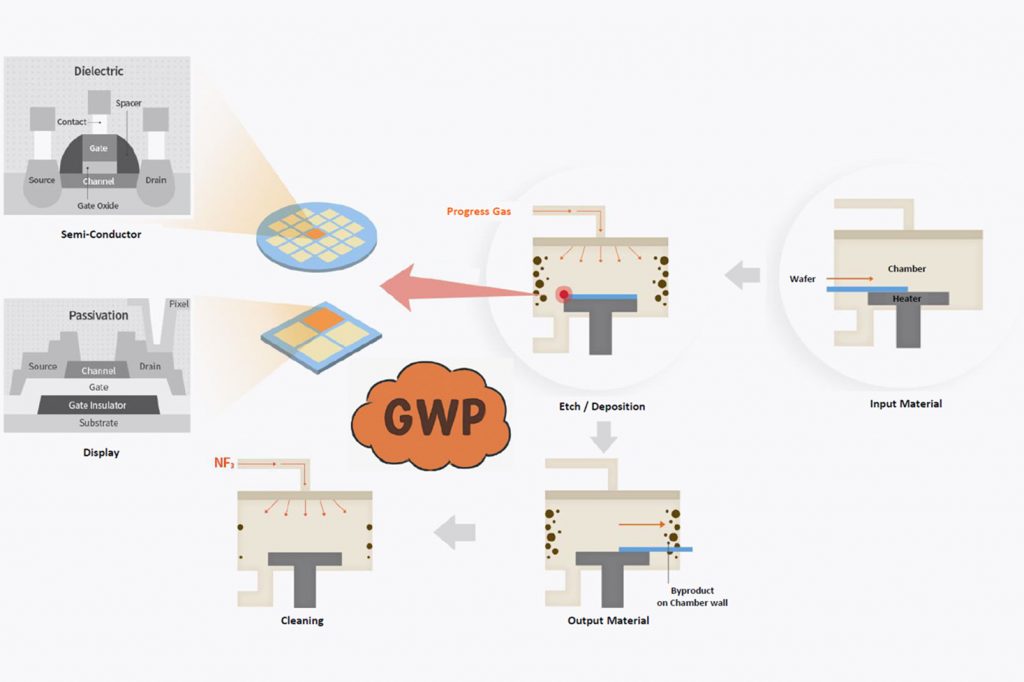A machine learning approach can help identify materials for semiconductor etching and cleaning with less Global Warming Potential than the gas currently used.
From the Journal: Journal of Vacuum Science & Technology B

WASHINGTON, Nov. 18, 2025 — The average global temperature has risen by 1.5 C since the pre-industrial era due to climate change, and it is poised to continue increasing. In response, the Intergovernmental Panel on Climate Change has developed the Global Warming Potential (GWP) metric, a unit of measurement that compares a specific gas’s contribution to climate change to that of carbon dioxide.
Nitrogen trifluoride (NF3) is particularly bad, with a GWP about 17,000 times higher than carbon dioxide. But NF3 is critical in the semiconductor industry for etching and cleaning, and its use has increased more than twentyfold over the past 30 years.
Though NF3 is often viewed as irreplaceable, finding a different material for semiconductor manufacturing without its environmental effects is paramount. However, GWP is difficult to measure. In the Journal of Vacuum Science & Technology B, by AIP Publishing, researchers from SK Specialty, in South Korea, developed a machine learning framework to predict the GWP of potential alternative materials for etching and cleaning semiconductors.
“In an ideal semiconductor process, NF3 should be completely decomposed,” said author Sung-Woo Park. “But even if a small portion escapes without being decomposed, it could have nonnegligible environmental implications.”
GWP is primarily determined by two indicators — radiative efficiency, or how well a gas traps heat in the atmosphere, and atmospheric lifetime, how long a gas stays in the atmosphere. For each of the approximately 200 molecules in the IPCC dataset, the researchers used a combination of machine learning approaches to extract information about these two indicators.
Their technique was able to identify key patterns in molecular features that related to radiative efficiency and atmospheric lifetime. Moreover, it worked holistically without putting too much weight on any single feature.
“But deep learning goes far beyond just predicting environmental indicators — it learns to consider many factors together. Ideally, it should assess environmental and safety aspects alongside etching performance to find the best tradeoff,” said Park. “After all, even if a material is eco-friendly, customers — semiconductor manufacturers — won’t accept it if it doesn’t perform well.”
SK Specialty is the world’s leading producer of NF3, and the researchers hope their work in predicting GWP will make it possible to introduce new materials into the semiconductor manufacturing process and reduce the use of this harmful gas.
“A key question of this paper is, ‘How can GWP be predicted as accurately as possible with such a small number of data?’” said Park. “This paper is just the beginning of our journey to answer that question.”
###
Article Title
Predicting Global Warming Potential: A self-training and ensemble machine learning approach
Authors
Sungyong Park, Sung-Woo Park, and Jinhee Lee
Author Affiliations
SK Specialty
